
Neuromarketing: Definition, Use Cases, And Examples
What is neuromarketing and how can marketers apply it to boost their brand and promotional campaigns? In this guide, we’ll walk you through this sophisticated marketing field in simple steps.
Consumer behavior is a puzzle itself. Human brains are so complex that it gets hard for marketing experts to grasp consumer decision-making and which marketing stimuli will bring the right audience to their business.
That’s why neuroscientists and experts from the psychological and cognitive sciences have recently stepped in to clear the air. Thankfully, marketing professionals can easily employ many of their suggested applications with a few trial and error tests to nurture positive results.
So let’s take it from the top, kicking off with a brief neuromarketing definition.

The easiest and most affordable email marketing and newsletter software!
What Is Neuromarketing?
Neuromarketing – also known as consumer neuroscience – is a marketing field that aims to improve customer communications and marketing campaigns utilizing tools coming from neuroscience, psychology, and behavioral sciences.
The main goal of neuro-marketers is to understand buyers’ decision-making process to create compelling products and campaigns that delight customers to the max. Considering how hard it is to stand out from the competition, this procedure can bring lots of assets to the table.
One of the first experts associated with neuromarketing was Gerard Zaltman, who studied the human subconscious and how specific images can cause a positive emotional response and affect purchase decisions. Since then, many similar experiments and studies have been carried out, shedding light on many hidden consumer behavior aspects.
Top Neuromarketing Techniques
Uncovering the complexity of human behavior is not a piece of cake. Let’s imagine that you want to explore how people respond to a particular promotional campaign. How can you achieve that? Below, we’ve listed the main tools experts can use:
Brain Scanning
Since one part of the brain deals with unconscious neural activity, brain scanning is one of the top methods to understand human behavior. However, someone should know exactly how the brain works to conduct these studies efficiently and reach safe conclusions.
For instance, the pre-frontal cortex controls higher cognitive functions such as attention and thought processing, while the limbic system is activated during emotional responses. Or, based on Kahneman’s theory, the brain has two systems: System 1 includes all the automated and intuitive reactions, while System 2 is the analytical and reasoning side of the brain.
Experts can either use functional magnetic resonance imaging (fMRI) or electroencephalograms (EEG) to monitor these processes. Both methods can show you how the brain responds to certain marketing stimuli but in different ways – see the image below.
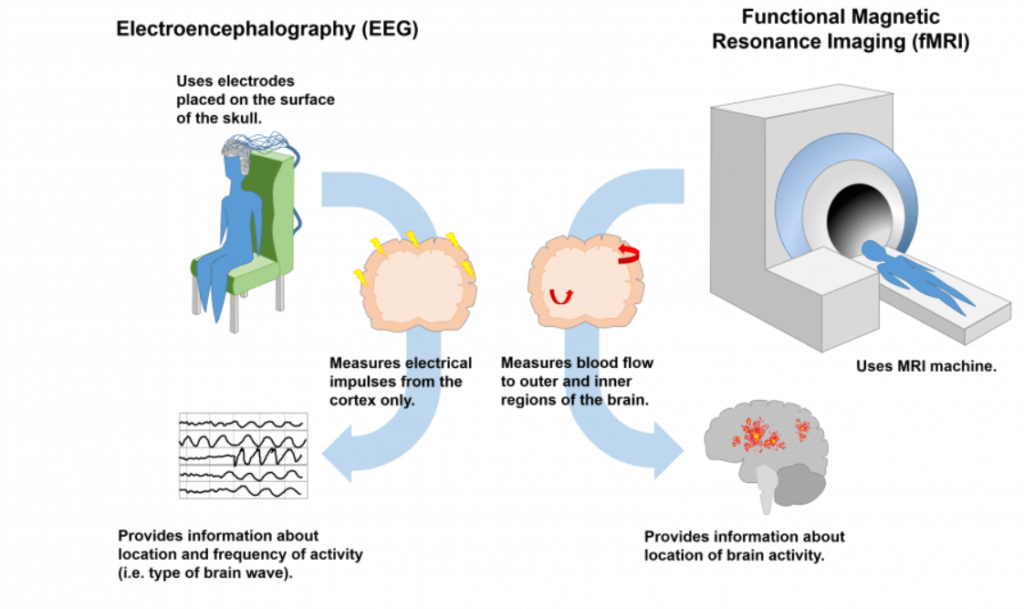
Overall, EEG can capture more direct information about neural activity in real-time, while fMRI has temporal constraints due to measurement limitations. Plus, fMRI should be conducted in a lab while EEG can also be portable.
Physiological Activity
It’s not easy to access this equipment in terms of knowledge-based and monetary resources. That’s why neuromarketing experts usually use most of these research methods in universities or business school facilities.
Fortunately, experts can also employ simpler methods from neuroscience research based on biometrics to detect arousal or attention. Let’s dive into the most popular techniques:
Eye-tracking: It measures arousal via pupil dilation or attention via the eyes’ fixation points.
Facial coding: It detects emotions through facial expressions.
Heart rate: It shows feelings such as anxiety or excitement.
Galvanic skin response (GSR): It works similarly to the heart rate response above.
Let’s share an example from email marketing. By using eye-tracking tests, you can see which parts draw the readers’ attention to ensure that its more crucial elements, for example, a Buy button, are easy to detect.
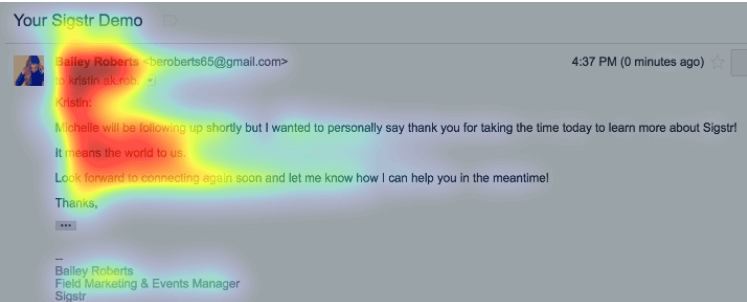
By backing up these findings with big data and consumer survey results, you will be able to discover more stable behavioral patterns that can positively alter your marketing efforts down the line.
The Most Common Uses Of Neuromarketing
So how can you make the most of the neuromarketing research methods to boost your marketing strategies and benefit your business and your buyers? Let’s see:
Customer Segmentation
Customer segmentation is at the heart of personalized marketing, which has won solid ground in business. When dividing customers into different groups based on variables such as demographics or behavioral data, you can deliver tailored experiences to them and please them to the maximum extent possible.
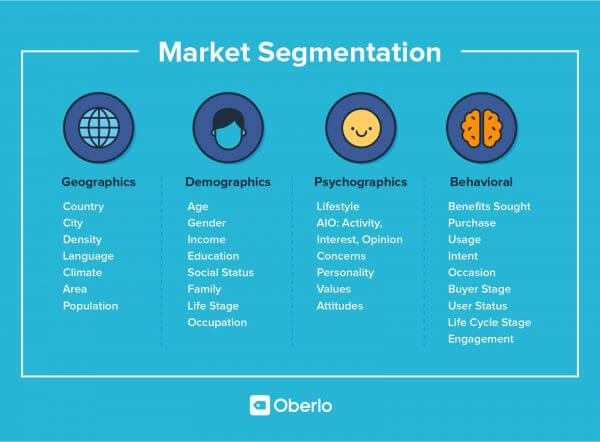
Suppose you want to dive deeper into the behavioral data of your customers. You can use neuroscientific methodology, such as electroencephalography or GSR to monitor brain activity or physiological and emotional arousal.
Someone could argue that you can get that info from customer surveys, as well. However, these sources are less credible as certain cognitive biases can step in the way leading to inconsistent responses when it comes to a “marketing cue.”
What if a participant believed that their reaction to the survey was unpopular or even unethical? Would they feel free to share it? The truth is that sometimes they don’t. Nevertheless, with brain imaging and similar methods, this gap gets bridged!
Successful Campaigns
Once you’ve conducted your market research to discover buyer preferences and habits related to a product/service, you begin your promotional efforts. So how can you ensure that a campaign will be well received and influential?
If you know your buyer personas and you’re on the verge of launching a massive campaign, you can apply a neuromarketing method to see the results. From neuroimaging to facial coding tests, marketers can draw safer conclusions about buyer reactions before they create a go-to-market strategy. So why not give them a go?
Big brands like Apple, Coca-Cola, and Pepsi often resort to such methods to secure their product and promotional effort success. We understand that these techniques may require a big budget, but it’s best to be safe than sorry if you’re launching your next big hit.
Effective Design
If you’re an eCommerce marketer, you know how robust your website design is for your success. A clear layout with distinct product categories and visuals can make navigation a great experience for the customers. But how can you ensure that everything is at the right place and that visitors will find it easy to browse through your site?

To overcome this challenge, you can use eye-tracking software or heatmaps to observe which parts draw the visitors’ attention. Then, tweak the details that seem problematic based on the results to boost conversions. For example, if the “Cart” is hard to find, place it in a more obvious position to help visitors move to the checkout faster.
If you can’t afford those tools and need a quick fix, just rely on the first impression rule. Add the essential information about the brand, such as your logo, best-seller products, and customer reviews, at the top of the site. Use a clear font and distinct categories to grab the attention of those who are not eager to scroll. The same rules apply to email newsletter and product design.
Efficient Stores
Have you ever visited IKEA? If yes, then you’ve probably realized that it’s impossible to leave without purchasing at least one item. That’s because the store is designed so that visitors get an actual tour and a glimpse of all product categories before they make it to the Exit sign.
But if you don’t own an IKEA department store but a local shop, there are still ways to help visitors get a real grasp of your brand. Create fine product categories with clear labels and present them in a minimal but fancy way. It will enable them to process that information faster and find their targeted products in zero time.
You can also build a corner with bargains and discounts next to the checkout if you want to incentivize some last-minute purchases. All these tiny twists will gradually contribute to prosperity and growth.
8 Powerful Neuromarketing Examples To Consider
Want to learn more tangible neuromarketing examples and psychological or cognitive tricks to maximize your sales and brand effectiveness? We’ve gathered them here, including information from successful businesses:
1. The Sense of Color
Most of us have connected specific colors with a single brand. For example, red comes to mind with Coca-Cola, while green is more of a Starbucks element. Both examples relate to the logo of each brand and other features, such as packaging.
Overall, when consumers learn to identify your brand with a single or set of colors, then they’ll recognize it faster, so make sure to use those colors for all different types of customer communications. You can use neuromarketing to test which color palette attracts consumers the most, utilizing A/B testing.
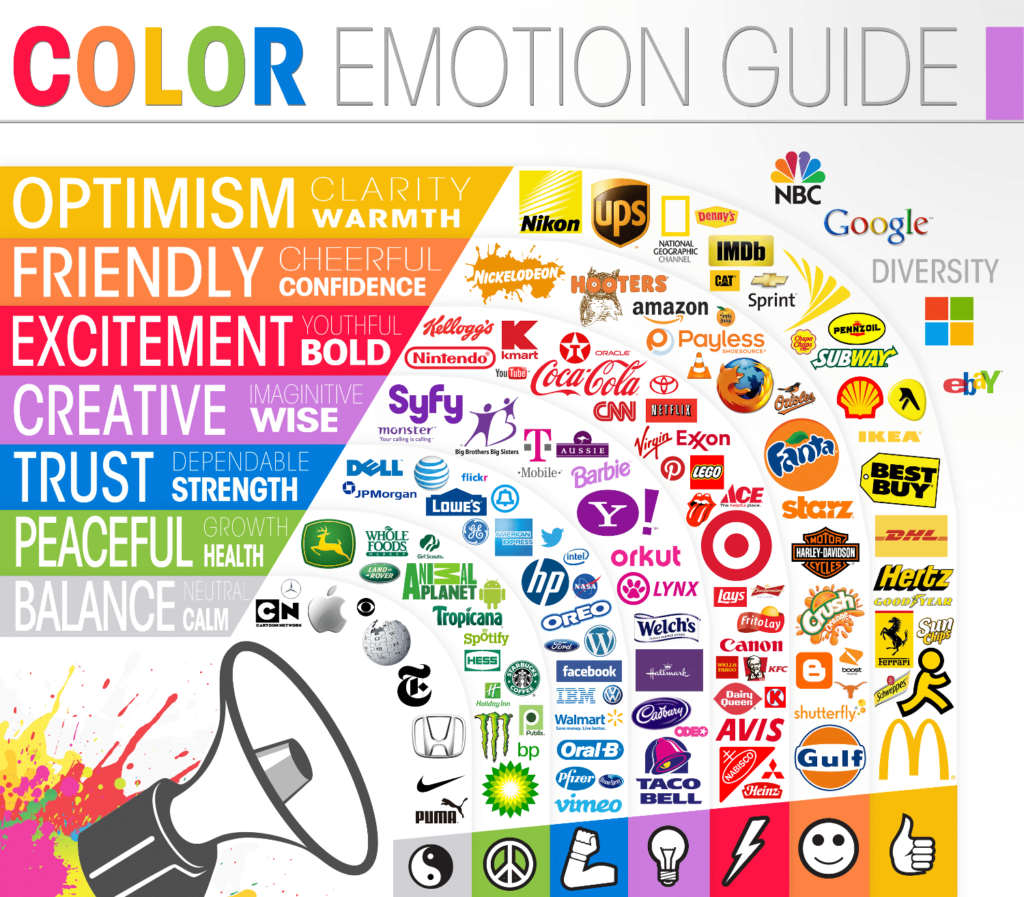
And remember, color psychology can have a strong impact on marketing communications. Learn which emotion each color elicits and shift your core messaging accordingly.
2. The Packaging Effect
Packaging can also play a role in the perceptions customers have of your brand. The color mechanisms still apply, but text and imagery are also in the game. Of course, the whole packaging material should be easy to handle but resilient, too.
For example, Frito-lay used neuroimaging to reshape their packaging and make it more efficient. It turned out that customers preferred the matte look compared to the shiny one. And the brand couldn’t deny the impact of the change.
3. The Power of Social Proof
Mass psychology can also hugely impact someone’s behavior. In marketing terms, people are more likely to prefer popular products made by top commercial brands or learned through word-of-mouth marketing. Why? Because it makes them feel that their purchase decision is safe and widely accepted.

To make the most of this trend, you can place some of the top-rated customer reviews on your website or share them on social media or via newsletters, as Cladwell did. Feel free to create referral marketing campaigns and ask your customers for support in exchange for an excellent incentive, e.g., a product discount.
4. The “Less Is More” Principle
Another cognitive function that can negatively affect consumer behavior is decision paralysis. When you offer customers a wide range of products and services, you may start confusing them, leading to a sales decrease.
To avoid this hazard and help consumers browse through products faster, offer them clarity. So if you manage an eCommerce store, create distinct product categories that are easy to spot and scroll. And if you own a physical store, place similar products together, with labels and product descriptions.
5. The Urgency Variable
Have you ever seen campaigns about sales or deals with countdown timers and rough deadlines? This is because adding time constraints prompts buyers to act fast to get the offer.
So if you want to ensure that your visitors will complete the purchase, add the deadline at a profound place. For example, if you send an email marketing campaign, you can include the date on the subject line to attract buyers at first glance.
6. The Pricing Fixation
Which pricing variations are more likely to convince customers to buy? In the infographic, you can find some tricks to make your prices more attractive:
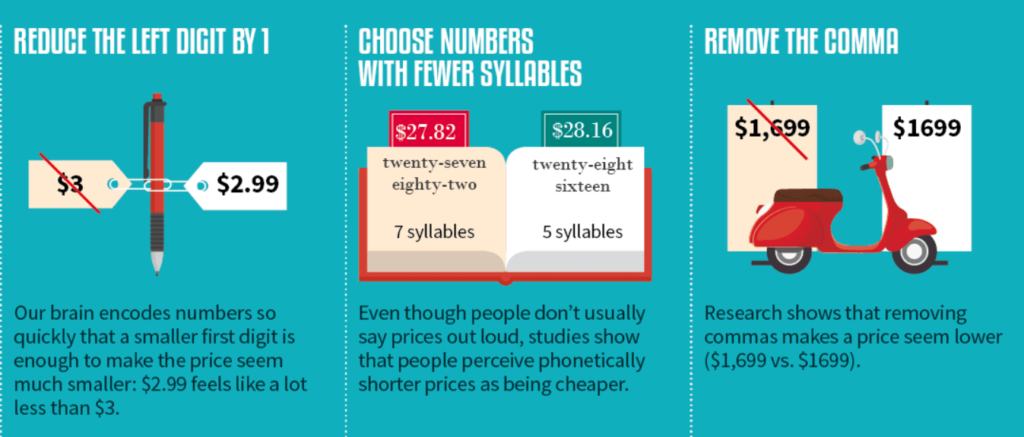
From: The Visual Capitalist
Plus, there are specific tips to make sales and discounts more appealing. For instance, instead of mentioning the exact amount of discount you offer, state it as a percentage so that the perceived amount seems bigger. Moreover, you can create a visual contrast between the initial price and the sale – e.g., different colors – to draw your customers’ attention.
7. The Dopamine Effect
Dopamine is a neurotransmitter that is associated with exciting and pleasing experiences. An increase in dopamine levels acts as a reward to the brain and keeps the person engaged in the task or process at hand.
By offering exciting experiences to your customers, you maximize this effect and make them more pleased with your product or service. But first, learn your target audience inside out to grasp what excites them and serve it to them generously. For example, if you are in the tech industry, you can experiment with gamification to keep dopamine levels rising.
8. The Visual Paradigm
Last but not least, you’ve probably heard that a picture is worth a thousand words. This is also a case in neuromarketing. People’s eye gaze is quicker to fall on an image and the copy inside or around it.
Therefore, add brand-consistent visuals relevant to your product/service or the campaign to boost your messaging. However, it’s best to avoid providing conflicting or misleading visual information; just make sure to display your products beautifully and realistically.
The Ethical Dilemma Of Neuromarketing
Since the dawn of neuromarketing, some people have inevitably questioned how ethical it is to apply this practice in customer communications. But the reality is that neuromarketing is as manipulative as other marketing practices aiming to understand customer needs and behavior to influence their purchase decisions.
However, privacy invasion is a serious matter nowadays. That’s why many associations have established neuroethical principles to combat the misusage of consumers’ private data. For example, these may concern the non-invasive nature of the measuring tools or safeguarding the anonymity of the participants.
As a reference, you can read the Institute of Neuromarketing code of ethics, a Neuromarketing Science & Business Association (NMSBA) member.
Neuromarketing Or The New Era Of Marketing?
Understanding your customers’ needs and predicting their reactions is not always easy, especially in an ever-changing market with high competition. But if you comprehend some basic cognitive functions and how they affect consumer behavior, you’ll get one step closer to developing products that matter and campaigns that move.
If methods like brain imaging are way out of your league, experiment with the tangible neuromarketing examples mentioned earlier. Embrace mistakes and learn from them until you find what works best for your business and your target audience.
Ready to build some email marketing campaigns that will excite your customers? Sign up for a Moosend account today and create unique newsletters that convert. You can also add a countdown timer to boost urgency for better results or test different subject lines with our free tester.



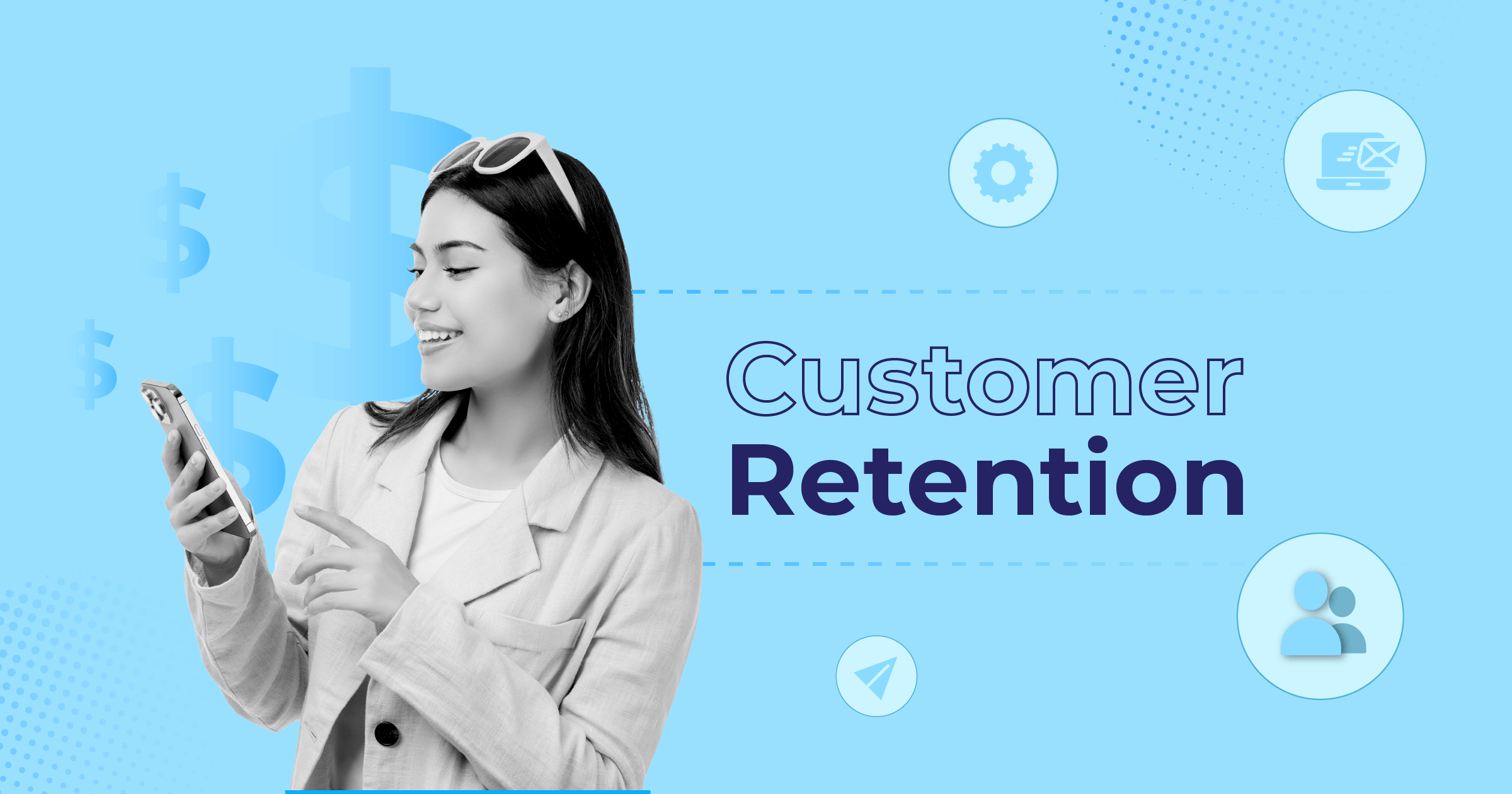
 Published by
Published by

